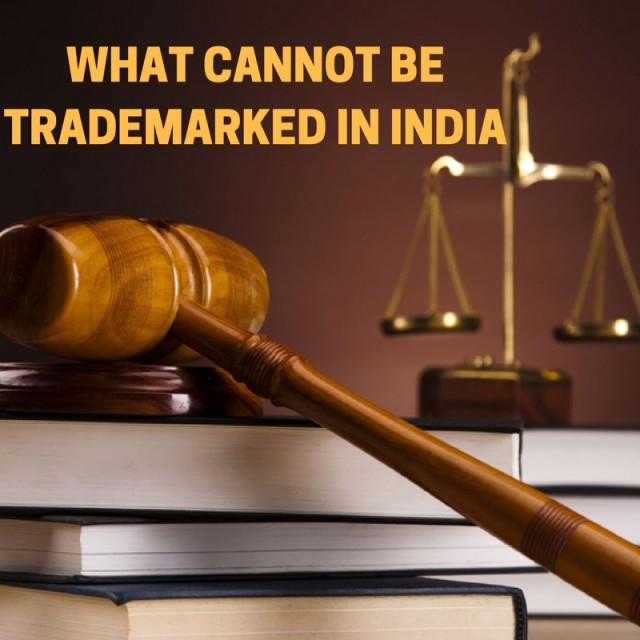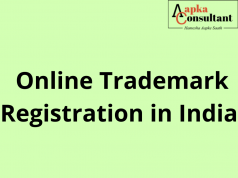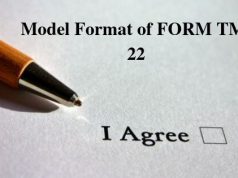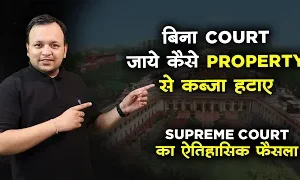What Cannot Be Trademarked In India?
The word, trademark, denotes words legally registered or established by use as representing a company or product. When competition is spurting in every nook and cranny of the world, it becomes almost essential to differentiate our goods or services from others present in the world. India has emerged as the third largest base for start-ups in the world, according to the NASSCOM Start-Up Ecosystem Report, 2015. The strife to stay in the market makes one cautious about his products. Trademark concept to Indians may be quite new, but it is interesting to know that about 3000 years ago, Indian craftsmen did engrave their signature on their artistic creations. With the advent of globalization and interconnectedness, trademark laws have fastened their grip over the Indians.
The first legislation with respect to trademarks was the Trade Marks Act, 1940 which was similar to UK Trade Marks Act, 1938. As time elapsed, it was seen that the act was inept to meet the requirements of the society. Thus, the Trade and Merchandise Marks Act, 1958 was enacted which was finally repealed by the Trade Marks Act, 1999. This act was in compliance with the provisions of the TRIPS. It provides a platform for the registration of trademarks of goods and services, thereby, providing the exclusively identifying the product with its manufacturer and thereby also providing the manufacturer relief in case of infringement of his trademark.
Trademarks, in India, have been governed by the principles of the common law.
But after the enactment of the trademarks act, 1999, section 2(1)(zb) of the act defines trademark as-
“trade mark” means a mark capable of being represented graphically and which is capable of distinguishing the goods or services of one person from those of others and may include shape of goods, their packaging and combination of colours; and-
(i) in relation to Chapter XII (other than section 107), a registered trade mark or a mark used in relation to goods or services for the purpose of indicating or so as to indicate a connection in the course of trade between the goods or services, as the case may be, and some person having the right as proprietor to use the mark; and
(ii) in relation to other provisions of this Act, a mark used or proposed to be used in relation to goods or services for the purpose of indicating or so to indicate a connection in the course of trade between the goods or services, as the case may be, and some person having the right, either as proprietor or by way of permitted user, to use the mark whether with or without any indication of the identity of that person, and includes a certification trade mark or collective mark;
Certification mark
This mark basically identifies the origin, material, quality and characteristics of goods and services offered by a manufacturer/dealer from his competitors. They are also used to assess the worth of labour in manufacturing goods or services.
Collective mark
These marks differentiate the members of a collective group, which can be a cooperative organisation or an association.
What cannot be a trademark
Trade Marks Act, 1999, sections 9 and 11 give the grounds for refusing a trademark. Section 9 mentions the absolute grounds and section 11 provides with the relative grounds for refusal. Mentioned below are the grounds for refusal in India-
Devoid of distinctive nature
The criterion of being distinct has been interpreted widely in the Indian law. The mark of a product or service which is not of a distinctive nature would not be a trademark. The registration of descriptive trademarks is prohibited under Section 9(1)(b) of the Trade Marks Act, 1999, unless they are distinctive.
Names/ Surnames
Names or surnames cannot be used as a trademark in India if they do not possess a distinctive character. Also, if such names are used dishonestly, they would not be given the status of a trademark. For example, in Prathiba M. Singh v Singh and Associates 2014 (60) PTC 257 (Del), the court observed that “‘singh’ is a very common surname, and nobody can have a monopoly over it.”
Numerical
Numbers cannot be said to exclusivity to be used as a trademark, per se. In certain cases, the courts in India have concluded that numbers do not have a distinctive nature attached to them, thereby, not qualifying to be a trademark. In the case of Radico Khaitan Ltd v. Carlsberg India Pvt Ltd, the Delhi High Court observed that “a numeral cannot be said to have a distinctive character.”
Geographical location
Geographical locations cannot be used as trademarks. In Imperial Tobacco Company of India Ltd v. Registrar of Trademarks, AIR 1968 Cal 582, the Calcutta High Court held that “the trade mark “Simla” with the label is composite in character. It is a well-known hill– station of India. Its geographical signification is, therefore, plain and unequivocal.”
Colour
The Trade Marks Act does not specifically refuse the usage of colour. But Indian Registry and Courts do not prefer the idea of using colours as trademarks, for the reasons that the available stock will be depleted and the courts will be piled up with cases.
Sound
Musical notes in the form of musical notations are accepted as trademarks in India, but noises such as dog barking cannot be a trademark.
Smell
Smell has not been registered as a trademark in India. It is difficult to distinguish between different smells.
Characteristics of the goods or services
If there is any indication which serves in the trade as to designate the kind, quality, quantity, intended purpose, values, geographical origin or the time of production of the goods or rendering of the service or other characteristics of the goods or service, it shall not be used as a trademark. In the case of ELGI Ultra Industries Limited v The Assistant Registrar of Trade Marks, MANU/IC/0062/2008, the Intellectual Property Appellate Board [IPAB], held that “the words “ultra” and “perfect” are highly descriptive and laudatory. They cannot be seen as trademarks.”
Customary
The trademarks which consist exclusively of marks or indications which have become customary in the current language or in the bona fide and established practices of the trade shall not be registered. For example, Otis’s trademark “Escalator” for moving staircases became a generic word and therefore, the Trademark Office concluded that Otis cannot use its trademark since the mark has become customary in respect of moving stairs.
Deceitful
A trademark should not be deceitful to the public. For example, if a company starts to make biscuits by the name of Parle-J, it would be an infringement of the right of Parle-G, since it is highly deceptive.
Hurtful to religious sentiments
If certain marks become offensive to the religious sentiments of a person, they will not be considered as trademarks.
In the case of Lal Babu Priyadarshi v. Amrit Pal Singh (Civil Appeal No. 2138 of 2006, Supreme Court), the appellant had applied for registration of the mark “Ramayan” with the device of a crown in relation to incense sticks and perfumeries. The court observed that “no person can claim the name of a holy text as a trademark.”
Scandalous Matter
If any word is to be trademarked, it should not be scandalous or obscene, in any manner.
Prohibited under the emblems and names (prevention of improper use) Act, 1950
If the use of a mark is prohibited under the aforementioned act, it shall not be used as a trademark.
Shape of goods
Section 9(3) of the Trade Marks Act, 1999 states-
A mark shall not be registered as a trade mark if it consists exclusively of—
(a) The shape of goods which results from the nature of the goods themselves; or
(b) The shape of goods which is necessary to obtain a technical result; or
(c) The shape which gives substantial value to the goods.
For example, the shape of Vanilla ice cream that resulted from the nature of the product itself was not registered as a trademark.
Identical/ similar products
Any mark which is similar to an earlier mark cannot be used as a trademark for another product. For example, TATA motors cannot be assigned as a trademark again. There should be no unfair advantage.
Contrary to law
If a law of passing off is protecting an unregistered trade mark, such marks cannot be used by other persons as trademarks.
Registrar
It is open to the registrar to decline to register the appellant’s trade mark if he wishes to.
In the case of Geep Flashlight Industries Ltd. vs. Registrar of Trade Mark, AIR 1972 Delhi 179 even when the appellant’s proposed trademark satisfied the conditions under the act, the appellant was not entitled as a matter of right to the registration of the trade mark.
Conclusion
Trademark has provided a person with exclusivity over his work, but India is yet to explore in this field, to deal with the emerging innovations every next day. In India, for the registration of trademarks, the NICE classification of goods and services is followed which classifies products into 45 classes. When a product or service needs a trademark, it should fit in one of the classes. Thus, we see that the products and services have been limited to such classes by the Government.
It is not necessary to have a registered trademark, but the prior usage of the trademark is important. The problem is that nobody could save rights for products and services which would innovate in the future, especially in India. Trademarks being a self-serving aid to the society should be available on such platforms.
Some of the related articles:
- HOW TO REGISTER TRADEMARK IN INDIA
- Importance of Trademark Registration in India
- Trademark Registration in India
- What is Trademark Registartion
- TRADEMARK RENEWAL
Author: This blog is written by Kriti Bhatnagar.
OUR SERVICES
Company Registration I Trademark I Copyright I Patent I GST I MSME
ISO Certification I Website/App Policy I Legal Documentation
Annual Compliance I Connect Consultant
Visit: Aapka Consultant to get Online Services of CA CS & Lawyers.












